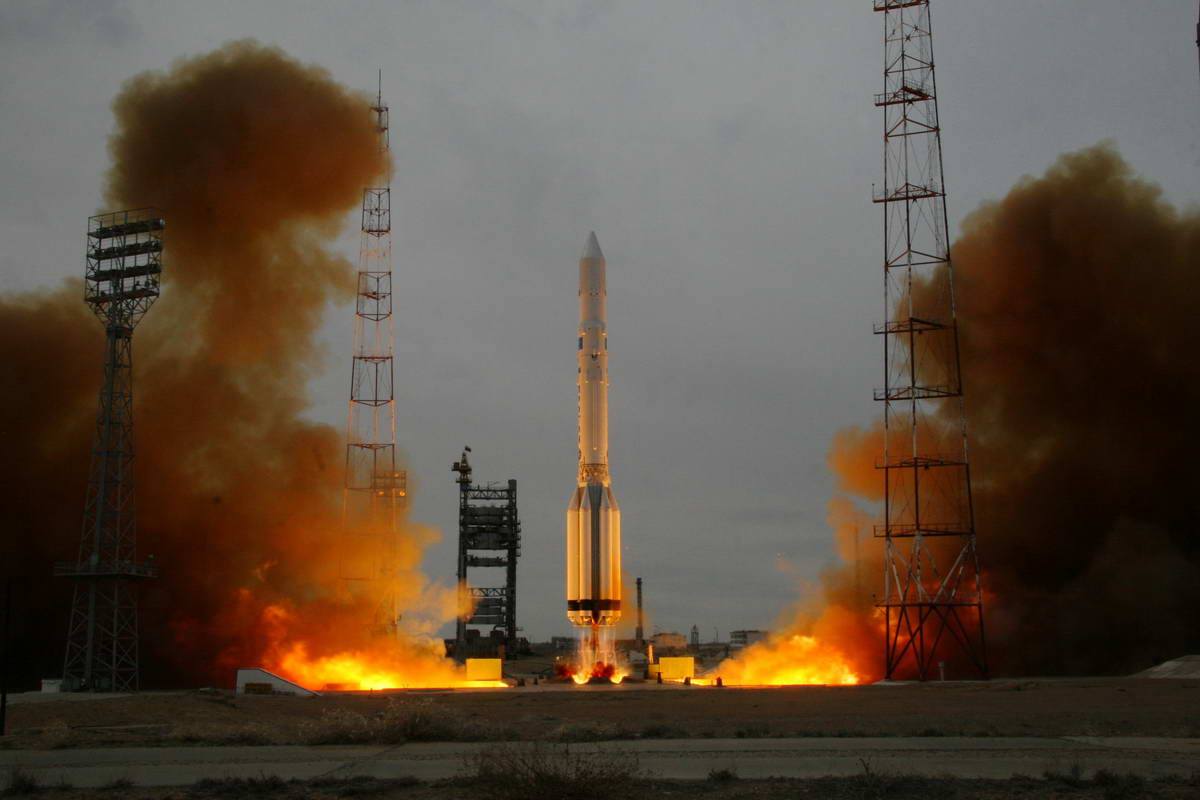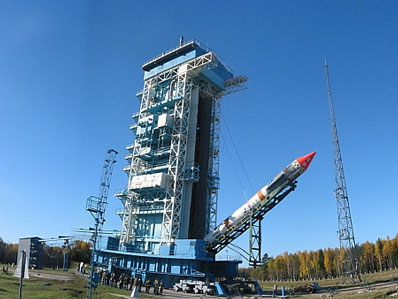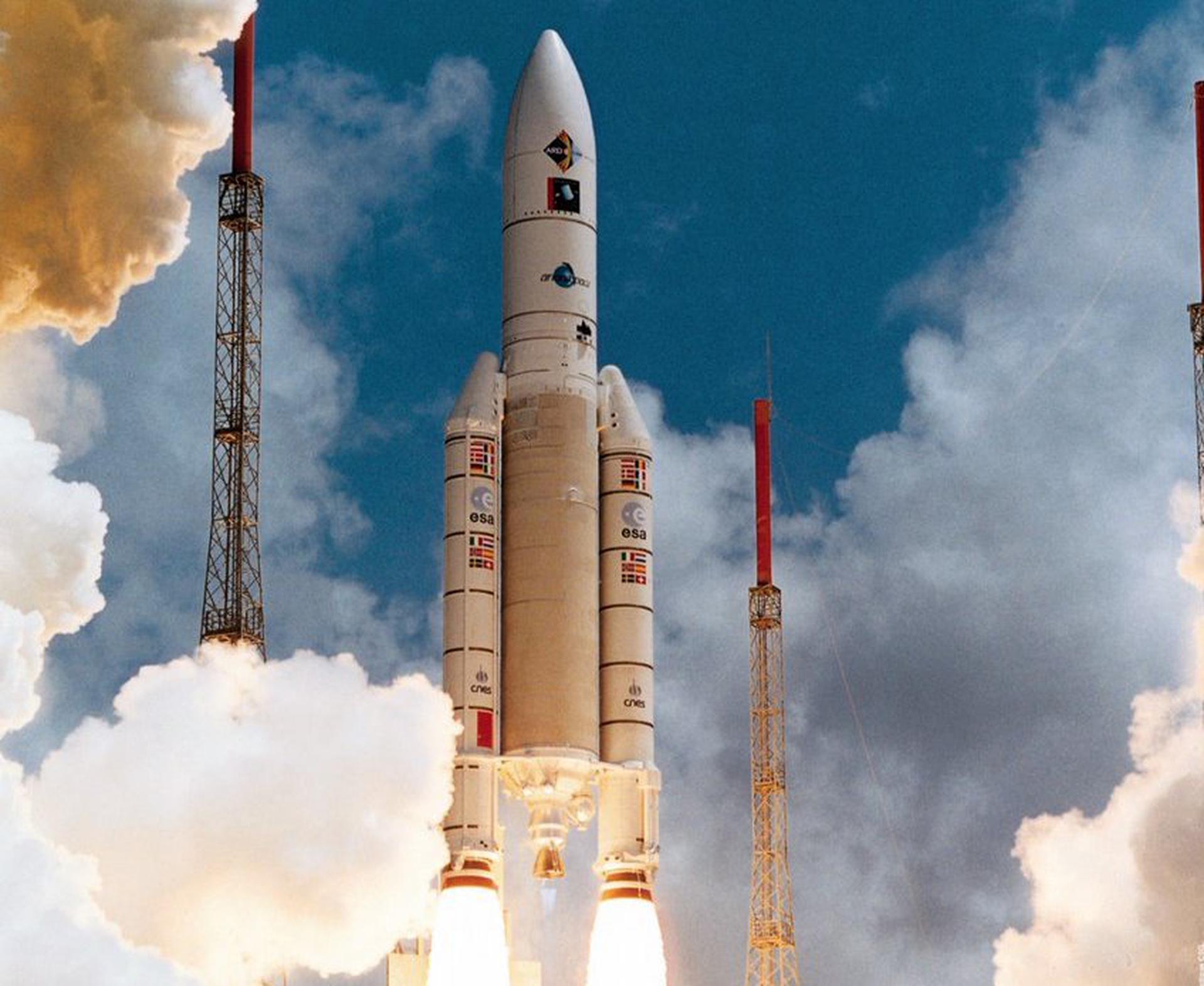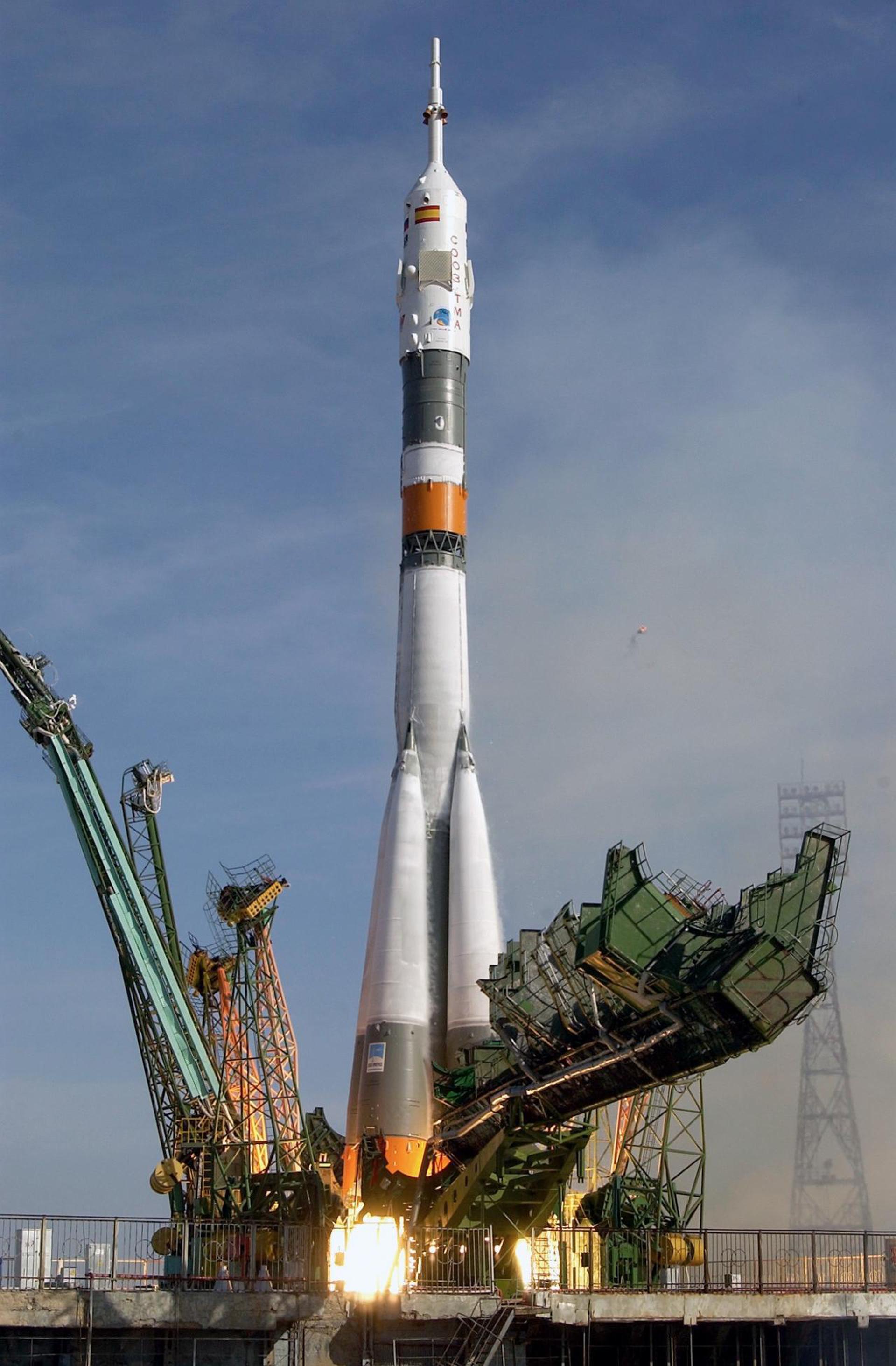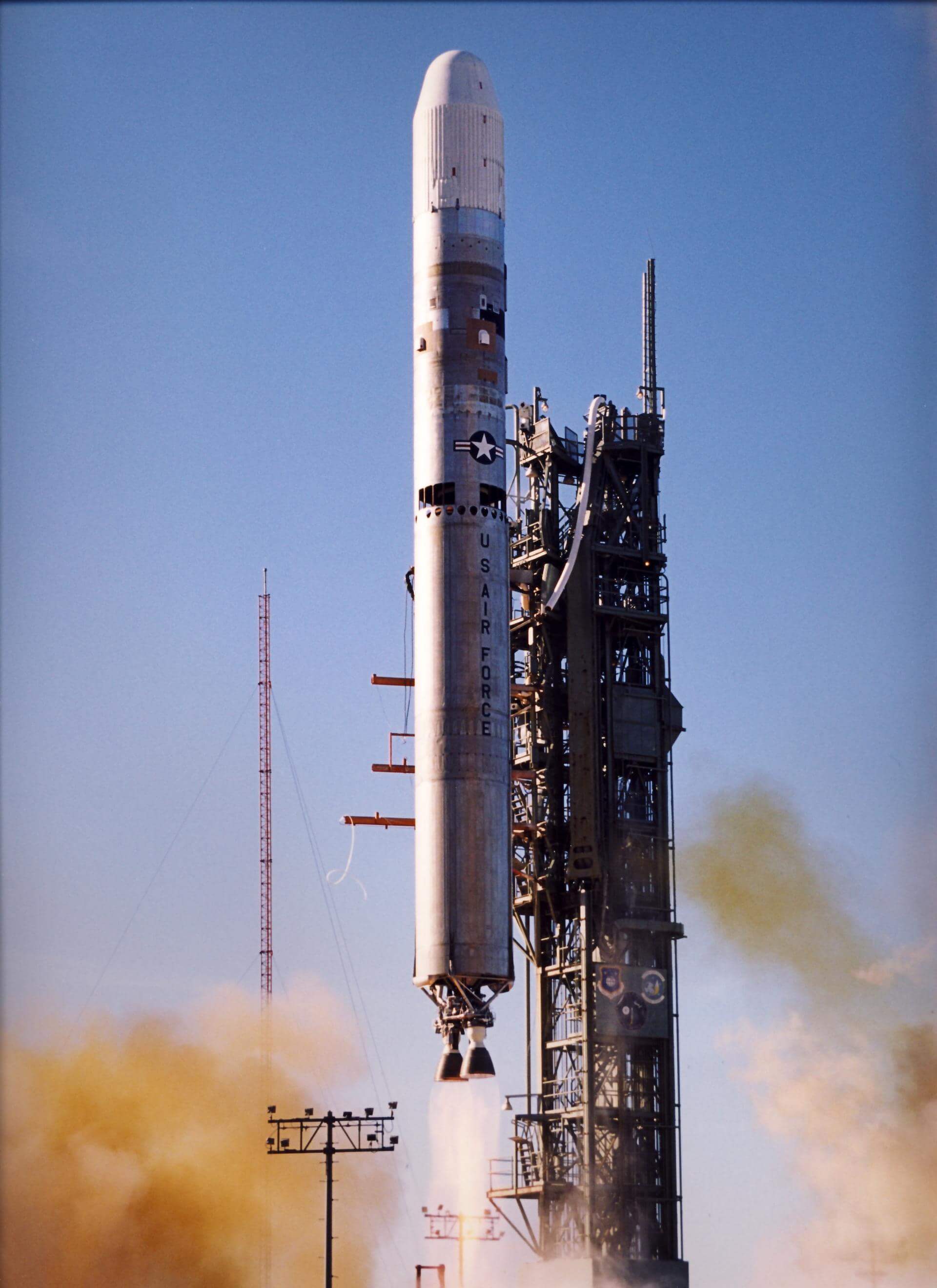Previous Spaceflight Launches
Filter by Agency, Locations or Vehicles
Show All LaunchesProton-K/17S40 | Araks-N 2
Khrunichev State Research and Production Space Center | RussiaBaikonur Cosmodrome, Republic of Kazakhstan
July 25, 2002, 3:13 p.m.
Status: Launch Successful
Mission:
This was the second launch of the Arkon-1 electro-optical reconnaissance. The 17S40 Blok DM5 upper stage and satellite were placed by the Proton into a parking orbit. The DM then made two burns to place the satellite in its 1500 x 1836 km x 64.4 deg operational orbit.
Low Earth OrbitKosmos-3M | Strela-3 131 & 132
Russian Space Forces | RussiaPlesetsk Cosmodrome, Russian Federation
July 8, 2002, 6:35 a.m.
Ariane 5 G | Stellat 5 & N-Star C
ArianeGroup | FranceGuiana Space Centre, French Guiana
July 5, 2002, 11:22 p.m.
Delta 7425-9.5 | Contour
McDonnell Douglas | United States of AmericaCape Canaveral SFS, FL, USA
July 3, 2002, 6:47 a.m.
Status: Launch Successful
Mission:
The CONTOUR (Comet Nucleus Tour) probe, built and operated by the Johns Hopkins University's Applied Physics Laboratory (APL), began its five year mission to explore three comets, using repeated encounters with the earth to modify its orbit in order to reach each target.
Sun-Synchronous OrbitSoyuz U | Progress M-46
Russian Federal Space Agency (ROSCOSMOS) | RussiaBaikonur Cosmodrome, Republic of Kazakhstan
June 26, 2002, 5:36 a.m.
Titan II SLV | NOAA 17
Lockheed Martin | United States of AmericaVandenberg SFB, CA, USA
June 24, 2002, 6:23 p.m.
Rokot / Briz-KM | Iridium 97 & 98
Russian Aerospace Defence Forces | RussiaPlesetsk Cosmodrome, Russian Federation
June 20, 2002, 9:33 a.m.
Zenit | Galaxy 3C
Sea Launch | RussiaSea Launch
June 15, 2002, 10:39 p.m.
Proton-K/DM-2M | Ekspress A1R
Khrunichev State Research and Production Space Center | RussiaBaikonur Cosmodrome, Republic of Kazakhstan
June 10, 2002, 1:14 a.m.
Space Shuttle Endeavour / OV-105 | STS-111
National Aeronautics and Space Administration | United States of AmericaKennedy Space Center, FL, USA
June 5, 2002, 9:22 p.m.
Status: Launch Successful
Mission:
STS-111 was a space shuttle mission to the International Space Station (ISS) flown by Space Shuttle Endeavour. STS-111 resupplied the station and replaced the Expedition 4 crew with the Expedition 5 crew. It was launched on 5 June 2002, from Kennedy Space Center, Florida.
Low Earth Orbit